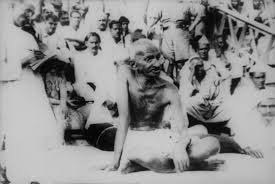The 1934 Bihar Quake or 1934 Bihar–Nepal Tremor was one of the most noticeably terrible seismic tremors in India's history.
Munger and Muzaffarpur were totally demolished. This 8.0 extent quake happened on 15 January at around 2:13 PM IST (08:43 UTC) and caused broad harm in northern Bihar and in Nepal.
Tremor:
The focal point for this occasion was situated in eastern Nepal about 9.5 km (5.9 mi) south of Mount Everest.
The regions where the most harm to life and property happened reached out from Purnea in the east to Champaran in the west (a separation of almost 320 km (200 mi)), and from Kathmandu in the north to Munger in the south (a separation of almost 465 km (289 mi)). The effect was accounted for to be felt in Lhasa to Bombay, and from Assam to Punjab. The seismic tremor was serious to such an extent that in Kolkata, around 650 km (404 mi) from focal point, numerous structures were harmed and the pinnacle of St. Paul's Cathedral collapsed.
Ground impacts:
One significant wonder of this seismic tremor was that sand and water vents showed up all through the focal vents of the quake region. The ground around these sand crevices died down, causing more damage.Extensive liquefaction of the ground occurred over a length of 300 km (called the droop belt) during the tremor, wherein numerous structures went afloat.
Gandhi visits after the seismic tremor:
 In Muzaffarpur, sand gaps emitted at a few spots around. The wells were stifled with sand, while water levels in tanks became shallower because of sand saved in the tank beds. A large portion of the structures in Muzzafarpur were harmed. All the kutcha (weak) structures fallen, while other pukka (unequivocally assembled) structures endured harm because of sinking and breaking of the ground.
In Muzaffarpur, sand gaps emitted at a few spots around. The wells were stifled with sand, while water levels in tanks became shallower because of sand saved in the tank beds. A large portion of the structures in Muzzafarpur were harmed. All the kutcha (weak) structures fallen, while other pukka (unequivocally assembled) structures endured harm because of sinking and breaking of the ground.Know Complete Loss of Arctic Ocean Ice by 2035
Visit Official Home Page





0 Comments